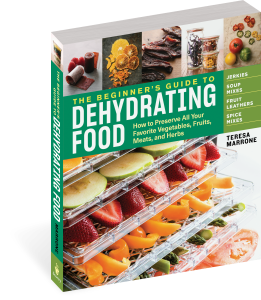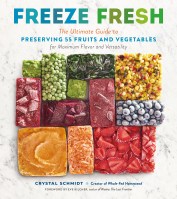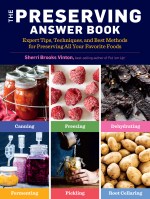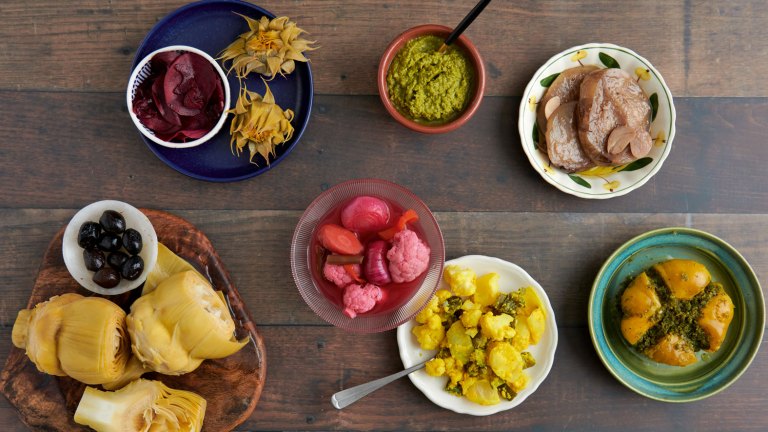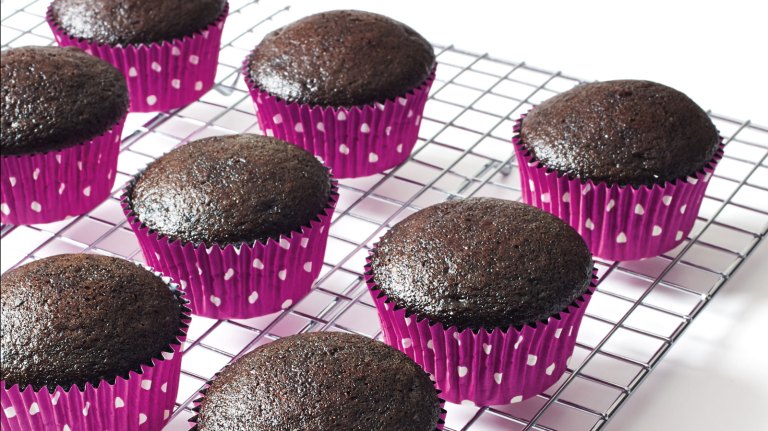A Beginner’s Guide to Dehydrating Tomatoes
Preserve your tomato harvest with helpful dehydrating advice, then prepare to savor the flavors of summer all year long with a shelf-stable recipe for garden-powered soup mix.
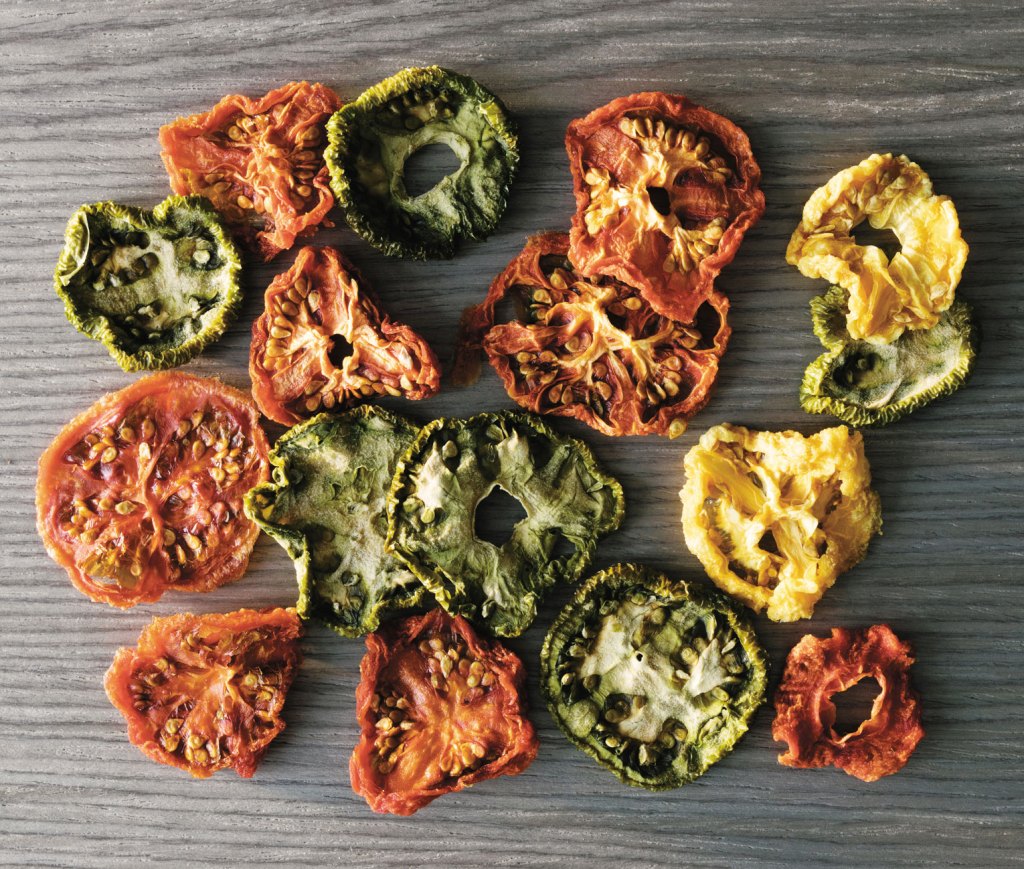
Tomatoes come in many varieties and sizes, from small cherry and grape tomatoes to huge beefsteak varieties. Both green and ripe tomatoes may be dehydrated, although only round slicing tomatoes are recommended for dried green tomatoes. Low-acid varieties, however, turn black and should not be dehydrated unless puréed, mixed with a little vinegar or lemon juice, and dried as a leather.
Although tomatoes are used as vegetables, they are actually fruits, so sun-drying works well. When drying tomatoes in a dehydrator or oven, a temperature of 135 to 145°F (57 to 63°C) is recommended to speed drying.
Ripe tomatoes are prepared differently than green tomatoes. Most ripe tomatoes should be peeled (skinned) before dehydrating, although this isn’t necessary with small tomatoes such as cherry, grape, and plum (Roma); however, plum tomatoes will dry more quickly and have a more vibrant color when dried if peeled before dehydrating.
Preparation. To peel ripe tomatoes, drop them, a few at a time, into a large pot of furiously boiling water. When the skins begin to split (usually 30 to 60 seconds), transfer them to a sinkful of cold water and slip off the skins. When all the tomatoes have been peeled, cut out the cores. Slice round tomatoes crosswise ¼ to ½ inch thick, and cut the slices into halves or quarters if you like; whole tomatoes can also be cut into ½-inch chunks. Whether peeled or not, plum tomatoes should be cut in half if small or into quarters if large. Cherry tomatoes and grape tomatoes should not be peeled, but need to be cut in half before dehydrating; place on trays with the cut side up to start. To speed drying of plum, saladette, grape, and cherry tomato halves, “pop” each tomato half midway through drying by pressing on the skin side with your thumbs to turn the flesh inside out; return to trays and continue drying.
For dried green tomatoes, you’ll get the best results with slicing varieties rather than cherry tomatoes or the other small varieties. Pick tomatoes while still green and firm, before they begin to ripen inside. Green tomatoes should not be peeled; simply cut out the core, then slice the tomatoes crosswise ¼ to ½ inch thick, or cut into ½-inch chunks.
Doneness Test. Dried tomatoes should be deep red, not black; black tomatoes are probably a low-acid variety and should not be consumed. Sliced tomatoes will be leathery to crisp and much thinner than when fresh. Chunks will be leathery and will feel springy when squeezed; there must be no moisture in the center, and if the chunks feel squishy rather than springy, they aren’t dry enough. Plum tomatoes and halved small tomatoes will be twisted, shrunken, leathery, and flexible or springy when squeezed; there must be no moisture in the thickest parts.
Yield. 1 pound of fresh tomatoes generally yields about 1 cup dried. When rehydrated, 1 cup of dried tomatoes yields about 1½ cups.
To Use. Dried sliced tomatoes or chunks rehydrate quickly and may be added without rehydrating to soups, casseroles, and stews that will cook for at least 30 minutes longer. To rehydrate slices for use in recipes, place on a plate or platter and spray with warm water, then let soak for 1 hour, turning and spraying occasionally with more water. Rehydrate chunks or smaller pieces by soaking in warm water to cover for 1 hour or more. For fried green tomato slices, dip rehydrated slices in flour and sauté in butter. Dried tomatoes are very easy to powder; the powder adds delicious flavor and valuable nutrients to broth and other soups.
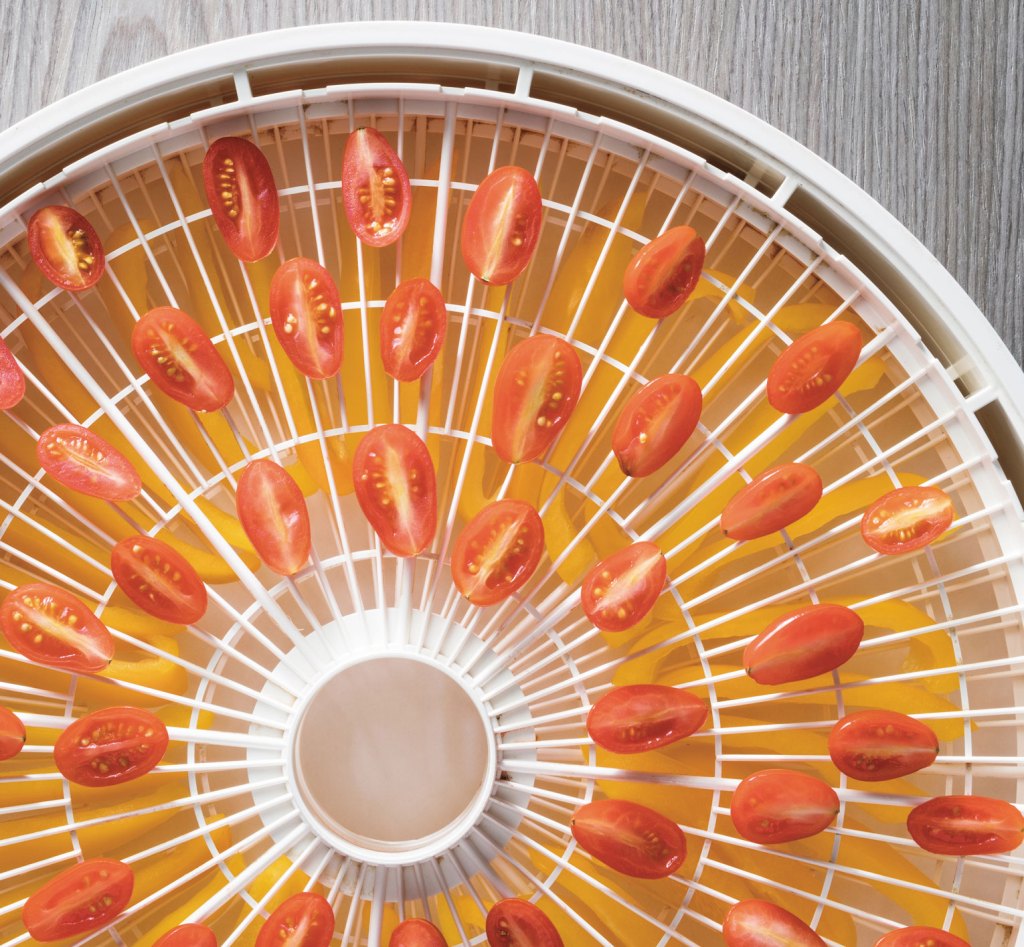
Drying Methods
Dehydrator or Convection Oven. For chunks or small tomatoes, use screens on trays or racks. Turn slices, halves, or quarters after 2 to 4 hours, or when the top sides are dry, and stir chunks several times during drying. Slices or chunks generally take 8 to 12 hours at 145°F (63°C). Plum tomatoes and halved small tomatoes take much longer. Some pieces will be dry after about 12 hours, while others may take as long as 24 hours; skinned plum tomatoes dry more quickly than unskinned.
Sun-Drying. Turn slices, halves, or quarters after about a half day of drying, or when the tops are dry; stir chunks when they can be separated. Slices or chunks will probably take 1 to 3 days to dry completely. Plum tomatoes and halved small tomatoes may take up to 5 days.
Oven (Nonconvection). Plum tomatoes and halved small tomatoes will take longer than 18 hours and are not recommended. For chunks, use screens on racks; slices should be fine when placed directly on the racks unless the racks have really large gaps and the slices are small. Turn slices when the top sides are dry, and stir chunks several times during drying. At 145°F (63°C), sliced and chunked tomatoes may take as little as 7 hours to dry, or as long as 18 hours.
Recipe: Minestrone Soup Mix in a Jar
Now, add your dried tomatoes to this tasty Minestrone Soup. For a gluten-free version, replace the barley with brown lentils and use pasta made from rice. Makes 6-7 servings.
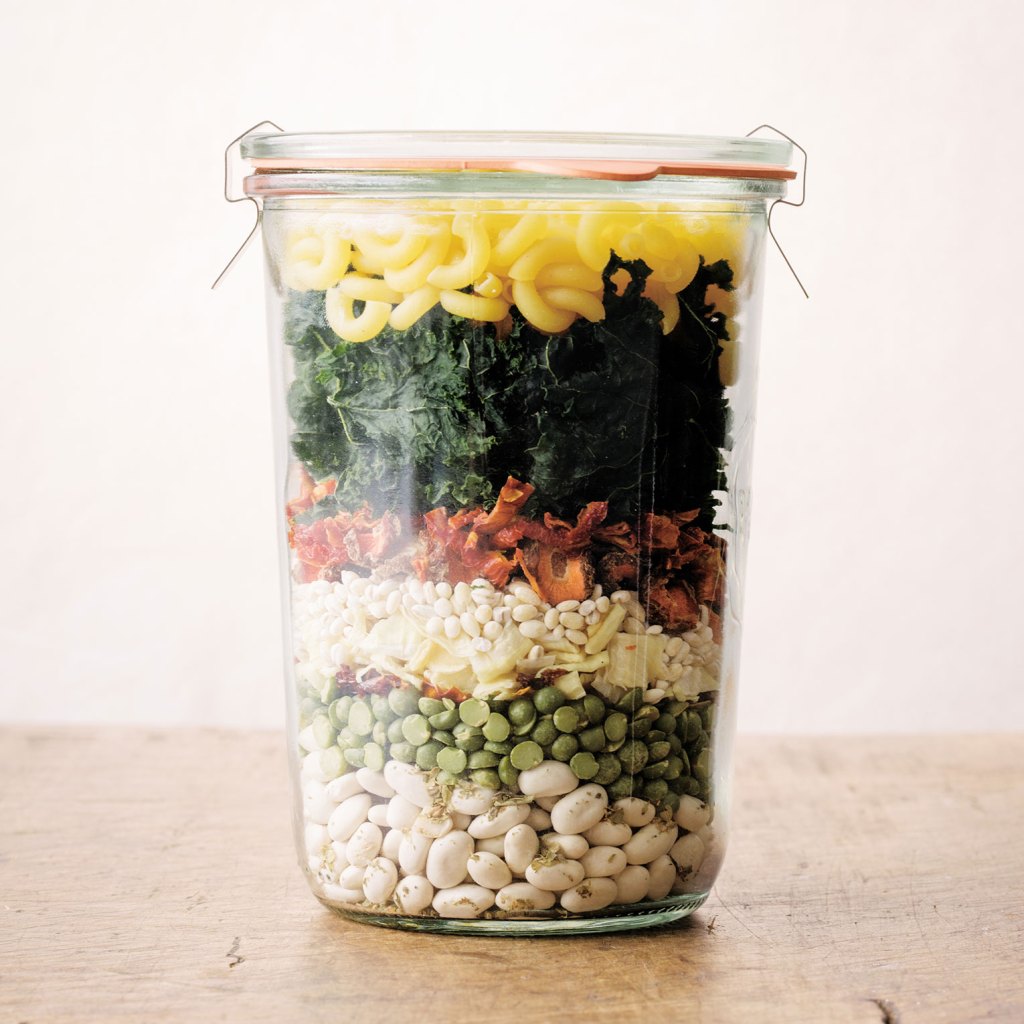
Ingredients
- ½ cup dried cooked or canned cannellini or great northern beans*
- 1 teaspoon Dried Italian Herb Mix or purchased Italian herb blend
- A few dried garlic flakes
- A few grinds of fresh black pepper
- ¼ cup purchased dried split peas
- 3 tablespoons dried diced bell peppers
- 3 tablespoons dried chopped onion
- 2 tablespoons dried celery slices
- ¼ cup pearl barley
- ¼ cup dried tomato pieces
- ¼ cup dried diced carrot
- ½ cup dried kale or other greens (large crumbles)
- 1 dried bay leaf
- ⅔ cup uncooked macaroni or other small pasta shape
- 1 quart water
- ½ pound ground beef or bulk pork sausage, optional
- 1½ quarts beef broth or vegetable broth
*Be sure to use dried beans that have been cooked or canned before drying; this recipe won’t work with uncooked dried beans.
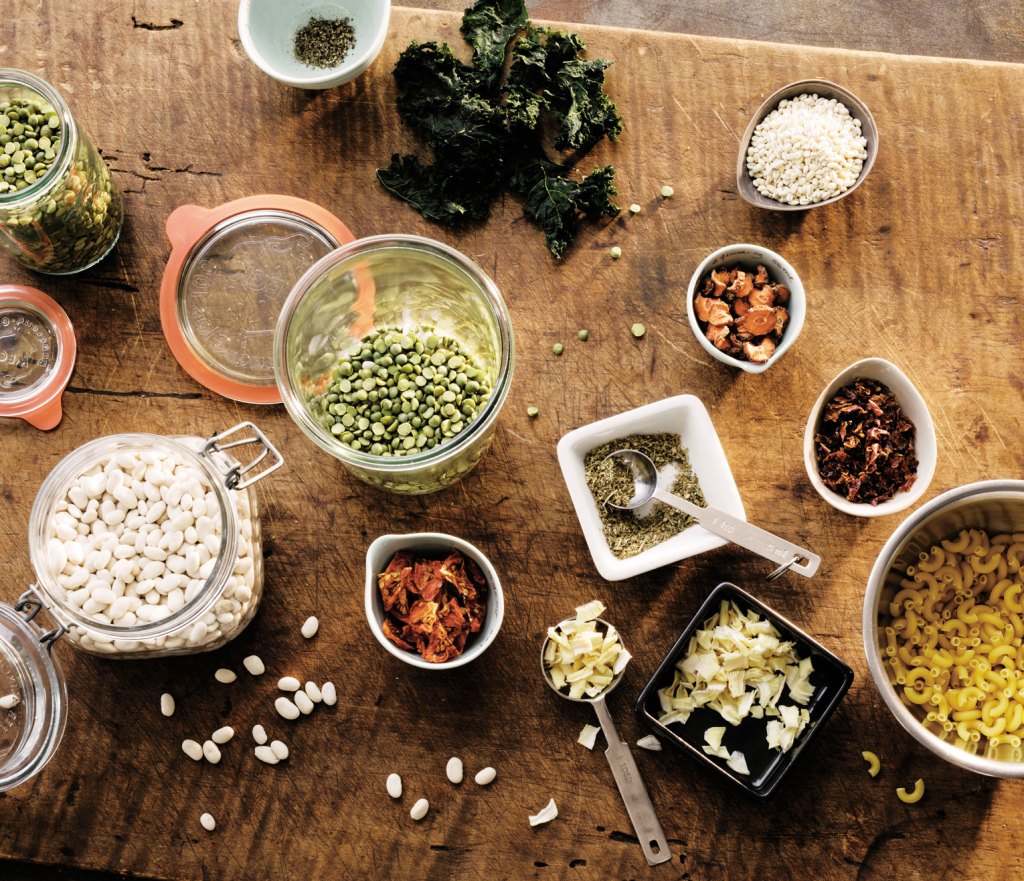
Directions
Pack the Mix:
Place the beans in a widemouthed 1-quart canning jar, tilting to make an even layer. Sprinkle with the herb blend, garlic, and black pepper. Add the split peas, bell peppers, onion, celery, barley, tomatoes, carrot, and kale in even layers, following the order listed. Tuck the bay leaf along the side of the jar. Place the macaroni in a small plastic bag; seal with a twist tie, then tuck it into the top of the jar. Seal the jar tightly with a new lid; if you have a vacuum sealer that works with jars, this combination can be vacuum-packed. Store in a cool place until ready to use.
To Prepare the Soup:
- Remove the macaroni from the jar. Add the remaining contents of the jar to a soup pot; stir in the water. Heat to boiling, and then cover and remove from the heat. Let soak for 1 hour.
- At the end of the soaking time, brown the ground meat (if using) in a skillet; drain excess fat. Add the browned meat and the broth to the soup pot. Heat to boiling, and then reduce the heat and simmer, stirring occasionally, for 30 minutes. Add the macaroni; cook at a gentle boil until the macaroni is tender. Remove the bay leaf before serving.
Excerpted and adapted from The Beginner’s Guide to Dehydrating Food © Teresa Marrone.
You’ll learn to dry fruits and vegetables at their peak, giving you an easy and economical way to stock your pantry with apple rings, mango slices, banana chips, dried soup beans, tomatoes, and much more for year-round enjoyment. In addition, drying guidelines for specialty items like meat jerky, fruit leather, dried herb and spice mixtures, backpacking meals, and even baby food round out this friendly handbook.
